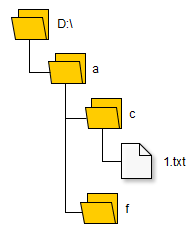Creating kubernetes clusters
Installation
Local cluster on Windows with minikube
- disable
Hyper-Vin windows if you have it on (Turn Windows features on or off) - VT-x/AMD-v virtualization must be enabled in BIOS
- VirtualBox should be installed
- download https://github.com/kubernetes/minikube/releases and put to
c:\(or some env variable custumization will be required)! - https://github.com/eirslett/kubectl-windows/releases also put to
c:\
.\minikube-windows-amd64.exe get-k8s-versions
.\minikube-windows-amd64.exe start --kubernetes-version="v1.8.0" --vm-driver="virtualbox" --alsologtostderr
Info:
minikube-windows-amd64.exe status
Dashboard:
minikube-windows-amd64.exe dashboard
To stop (stops virtualbox instances):
.\minikube-windows-amd64.exe stop
accessing cluster
If use local kubectl it will automatically detect cluster and eventualy remember access params in .kube:
In another case (e.g. from WSL or remote machine),
Show cluster info on local machine:
kubectl config view
apiVersion: v1
clusters:
- cluster:
certificate-authority: C:\Users\x\.minikube\ca.crt
server: https://192.168.99.100:8443
name: minikube
contexts:
- context:
cluster: minikube
user: minikube
name: minikube
current-context: minikube
kind: Config
preferences: {}
users:
- name: minikube
user:
client-certificate: C:\Users\x\.minikube\client.crt
client-key: C:\Users\x\.minikube\client.key
To connect from other machine you can edit config on that machine and put config showed on original machine
vim ~/.kube/config
File paths in config are related from .kube folder, so copy certs to e.g. .kube/.minikube. Then use-context:
kubectl config use-context minikube
working with cluster
List nodes:
kubectl get nodes
kubectl run hello-nginx --image=nginx --port=80
Expose:
kubectl expose deployment hello-nginx --type=NodePort
URL be shown:
minikube-windows-amd64.exe service --url=true hello-nginx
e.g. http://192.168.99.100:31943
on bare cluster machines
Check each machine has unique mac and product_uuid:
ip link
sudo cat /sys/class/dmi/id/product_uuid
daemon.json ensures that cgroup driver used by kubelet is same as the one used by Docker (ore
kubelet --cgroup-driver=cgroupfs)
sudo -i
apt-get update
apt-get install -y docker.io
cat << EOF > /etc/docker/daemon.json
{
"exec-opts": ["native.cgroupdriver=systemd"]
}
EOF
kubeletversion should be <=API serverversion
kebernetes-xenial for Ubuntu 16.04.3 LTS
apt-get update && apt-get install -y apt-transport-https
curl -s https://packages.cloud.google.com/apt/doc/apt-key.gpg | apt-key add -
cat <<EOF >/etc/apt/sources.list.d/kubernetes.list
deb http://apt.kubernetes.io/ kubernetes-xenial main
EOF
apt-get update
apt-get install -y kubelet kubeadm kubectl
Starting master:
kubeadm init
Then joing by last command
LINKS:
1. https://rominirani.com/tutorial-getting-started-with-kubernetes-on-your-windows-laptop-with-minikube-3269b54a226
